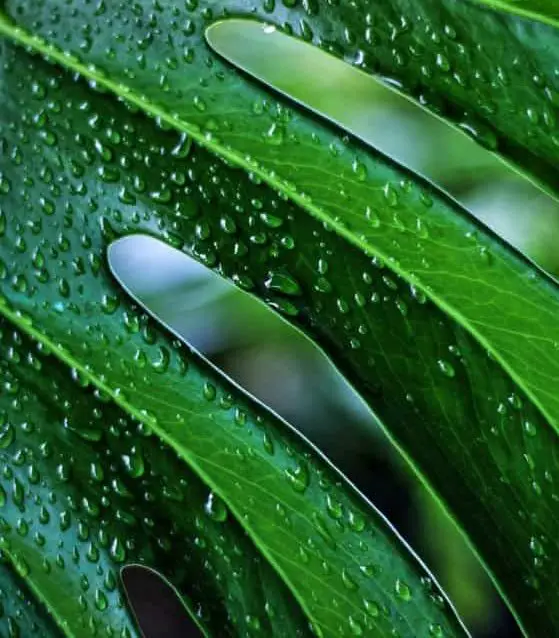Some links in the post are affiliate links and I get a commission from purchases made through some links found in the post.
Once you have put your heart and soul into caring for the Monstera, all you’ll want to see are splitting leaves adorning your space.
After all, the fenestrations make this plant the go-to for most people. So, to find your monstera plant drooping and not showcasing these splits can be pretty disheartening.
Moreover, you might be at a loss of what to do. People often assume that a plant droops due to a lack of water. And while this is often the case, sometimes, overwatering could be the problem.
You would only be adding insult to injury by watering the plant more.
That’s why we will walk you through each of the possible reasons behind your monstera drooping. And as a bonus, we will include how you can put this problem behind you.
Why is my Monstera Drooping?
 Before solving your plant’s needs, you must first understand a few things about it. First, the Monstera is a tropical plant accustomed to growing underneath canopies.
Before solving your plant’s needs, you must first understand a few things about it. First, the Monstera is a tropical plant accustomed to growing underneath canopies.
Thus, the conditions provided at home should match what it would get in nature. Of course, it’s not an easy task.
So, the goal is to get as close to these conditions as possible. When you don’t meet the threshold, problems start exhibiting, including drooping leaves.
Secondly, the Monstera has a unique relationship with water. You might argue that all plants also have the same love-hate relationship with moisture. But in the Monstera, it is more evident.
Yes, the plant needs water, so much so that if it does not get enough water, you will notice a droop. So, where does it get complicated? – when the plant gets too much water.
People often assume that tropical plants, the Monstera included, can withstand copious amounts of water. But that could not be further from the truth.
Now that we have those crucial points out of the way, let’s review the possible reasons and solutions to why your monstera might be drooping:
1) Underwatering
As you may have guessed from the intro, water plays a vital role in the wellbeing of the Monstera. And how could it not? – this plant thrives in tropical conditions.
So, it follows that if the plant does not get enough water, it won’t thrive. Why? – its roots will not have the medium necessary to derive nutrients from the soil.
Thus, the monstera plant somewhat starves, cannot make enough food, and starts showing unhappiness by drooping. It’s just like what you would expect of most plants.
How can you tell if underwatering is the problem? The Monstera will droop and may even start showing signs of browning edges.
Another critical sign lies in the state of the soil – how does it feel to the touch? Moist soil will feel a bit wet and cold even if you dig a few inches into the soil.
But dry soil? It feels dry and cracked, and you can even make out its hardness several inches under the surface.
You can correct underwatering in two ways. The first, which is highly common, is ineffective. In this, you grab a jug of water and pour it on the soil.
It gets wet, and as the excess water runs through the drainage holes, you believe that you’ve solved the problem. But the problem is that the soil can allow the water to drain through the pot without absorbing anything.
That’s why the second method is more effective. You water from the bottom up by standing the pot in water for about twenty minutes.
Using the drainage holes, the soil will absorb water upwards. Check to make sure the drainage holes are open; else, the soil will not absorb much water.
Then touch the soil at the top to check if it feels damp. If not, allow the pot to sit in the water for five more minutes and check. Keep doing this until the soil is evenly damp, and you can now remove the pot from the water.
Now that your plant is well-watered, are you good to go? Sure! But you must come up with the best watering schedule for your plant based on your climate.
For example, people living in hot and dry areas will need to water their plants regularly. Always check if the soil is damp before watering it. And don’t allow it to dry out too much between watering.
If you’re enjoying this article, check out our article on a pothos vs a monstera.
2) Overwatering
You might be so scared of underwatering your plant that you could end up killing it with water. And unlike underwatering, overwatering is more subtle.
It starts slow, and by the time you notice the signs, the damage usually has progressed to a dire stage.
What are the signs?
- Yellow leaves,
- Development of weak leaves,
- Brown patches on the leaf tips, and
- A rotting smell.
Moreover, the state of your soil can be a crucial giveaway in this case. The soil should generally feel a bit damp or slightly dried out. But when it’s overwatered, it feels wet and soggy. Now, how do you deal with this?
First, you figure out why the plant is overwatered. Possible culprits include:
- The pot does not have enough draining holes, or the holes are blocked,
- You water the soil before it slightly dries out, or
- The soil is not well-draining.
Without understanding why the soil is waterlogged, you cannot effectively save the plant. For example, if the problem lies in the choice of potting mix, then you must change the soil.
Start by moving the plant away from direct sunlight. You might think that being in direct sunlight will help dry the soil.
While it can work, it also increases the wilting and worsens the problem. So, forget about this.
Once the plant is in indirect sunlight, you have two options. One is to repot the plant in new soil and another pot. It works best for plants with root rot. However, it’s only viable in the warmer months.
If you try this in winter and other cold months, the plant may not survive.
The second option is to replace the soil at the bottom of the pot. Get rid of it and replace it with a good potting mix.
Then add some fertilizer to stimulate growth to replace the damaged roots. And of course, you must alter your watering schedule if it’s contributed to the damage to the plant.
Only water the plant when the top two inches are dry. Allow the water to run through the soil until it comes out of the drainage holes.
Then leave the plant undisturbed until the top inches are dry. Keep in mind that the watering needs will be higher during spring and summer.
That said, don’t overwater the plant as this can cause root rot. We always recommend using a watering schedule based on your climatic conditions.
You may also like: How to care for a monstera
3) Poor Lighting
 In the wild, the Monstera grows under canopies where it receives bright but indirect light.
In the wild, the Monstera grows under canopies where it receives bright but indirect light.
As the filtered light makes its way to the plant, it prompts the plant to make enough food to survive in the prevailing conditions.
At home, you might feel like placing the plant near a window. While this is okay, it can also expose the plant to direct light which can scorch the plant. Signs of poor lighting include:
- Drooping,
- Brown spots on the leaves,
- Small leaf production, and
- Lanky growth.
Lighting issues can occur in two ways. The first is exposing the plant to direct light that scorches the leaves.
The second is where you shield the plant from light such that it barely gets enough for food production.
Unfortunately, this also gets in the way of fenestrations, and the plant generally looks sickly. Just like with watering, lighting requires you to strike a balance.
So, how do you give your plant enough light? We recommend an east-facing window or any other location which receives bright and filtered light.
Alternatively, you can shade the plant using blinds or other materials. It’s especially important if you live in a hot and dry climate.
Can you grow your Monstera outside? Sure, but only in some months. You can start by allowing your plant more direct light when the weather warms in the spring.
Do this for a few hours each day, and it can adapt to the warmer conditions. But if the leaves show signs of burning, keep the plant shaded.
4) Temperature Problems
We always must ask ourselves what the native conditions of any plant are. Take the Monstera, for example. It is a tropical plant and thus thrives in such conditions.
So, you would expect it to do better in warmer conditions. Ideally, you should keep the temperature at 18 to 29°C. A good rule of thumb to consider is how you feel in the home.
If you feel comfortable, then the plant will likely be okay. But you can always use a thermometer to test the prevailing temperature.
What happens when the temperatures fall below 18°C? The lower the temperature, the more drooping you see in your monstera plant. And if they get as low as 10°C, the plant could suffer shock and die.
That’s why you must always protect the plant from cold drafts. Keep it away from windows and air vents that push cold air into the home. Also, be wary of the air. Dry air may hurt the plant, as we will later see.
Are some temperatures too hot for the Monstera? Generally, the plant does well with temperatures up to 30°C.
Any more than this, and the plant will start showing signs of wilting. So, keep an eye on that too and water the plant accordingly.
You may also like: How do you save a damaged monstera
5) Fertilizer Issues
The Monstera grows big, both in the wild and in the home. Under canopies, they can be as tall as 60 feet (18 meters), and at home, they can be as high as 9 feet (2.7 meters)!
And for it to be big enough to allow for fenestrations, it will need an array of nutrients. You may already know that most potting mixes in the market don’t contain enough nutrients.
So, during the active growing months, you will need to amend the potting mix with fertilizer. And in the inactive months, you can take a step back.
It’s easy to get carried away with the fertilizer and put too much, hoping that this will prompt more growth. But unfortunately, this can cause a build-up in the soil, damaging the plant’s roots.
If this happens, your monstera plant starts drooping because it lacks food to sustain its growth. Signs of too much fertilizer include:
- Stunted growth,
- Burned and yellowed leaf tips,
- Drooping, and
- Visible salts on the soil surface.
In this case, you have two options. If the weather allows, you can repot the plant, cut off the damaged roots, and start afresh in another potting mix.
But if this is not viable, you can flush the soil with running water for at least five minutes. That should dissolve most salts and leave you with a clean slate.
You can then hold off on fertilizing the soil and only do so during the active growing months with an all-purpose and water-soluble fertilizer. Ideally, you should apply it when watering to ensure the plant absorbs most of it.
If you are enjoying this article, check out our article on how to get rid of thrips on a monstera.
Other Possible Causes
Transplant Shock
We have mentioned repotting your plant a few times in this guide. But did you know that it can also affect your plant’s wellbeing?
Sometimes, the plant may droop after you transplant it. It can owe to damaged roots, which can happen during transplanting.
Or it could be that your plant’s roots were already damaged due to root rot (because of overwatering).
The best thing you can do at this point is to watch the plant. And ensure it gets the care it needs as it settles into its new home.
Humidity Problems
The Monstera loves both heat and humidity as these imitate its native growing conditions. But, of course, there’s a limit to how humid or hot the room should be.
When the humidity levels fall below 40%, the monstera plant shows signs of displeasure by drooping. It owes to the increased transpiration that robs your plant of the much-needed moisture.
To fix this, you can leave some bowls of water near your plant or leave the kitchen and bathroom doors open. If your home is especially hot and dry, investing in a humidifier could help you out.
You may also like: Can a monstera live outside
Poor Support
The Monstera is a climbing plant, and in its natural habitat, it uses this adaptation to get to the top of the canopy.
In so doing, it reaches enough light to promote fenestrations. Also, it gets the support it needs to bear its heavy weight.
So, if your plant does not have enough support, it can start to droop because it has nothing to climb. This problem is easy to fix.
All you need is to find some poles and sink them into the pot. Then your plant can start climbing the poles instead of spreading on the floor.
Pest Attacks
 Have you considered that your plant could be suffering from a pest attack? That’s right – even the Monstera is not entirely safe from such attacks.
Have you considered that your plant could be suffering from a pest attack? That’s right – even the Monstera is not entirely safe from such attacks.
Mealybugs and red spider mites are some of the pests that could be eating away at this beauty. They could rob it of nutrients and water as they do so, thus causing the drooping.
And the only way to find out is by inspecting the plant’s leaves on both surfaces. Once you nab the culprit, then you can deal with it individually.
Small Pot Sizes
You probably know that the Monstera grows fast. To accommodate this growth, you must repot the plant occasionally to give it more room for growth.
If none of the problems above seem to apply to your plant, then repotting might be the only answer.
Final Thoughts: Why is my Monstera Drooping?
The Monstera thrives on balance. So, if it seems unhappy, you’re likely giving it too much or too little of an essential factor.
Start with water, and if that does not suffice, investigate other possible causes. Happy Gardening!


